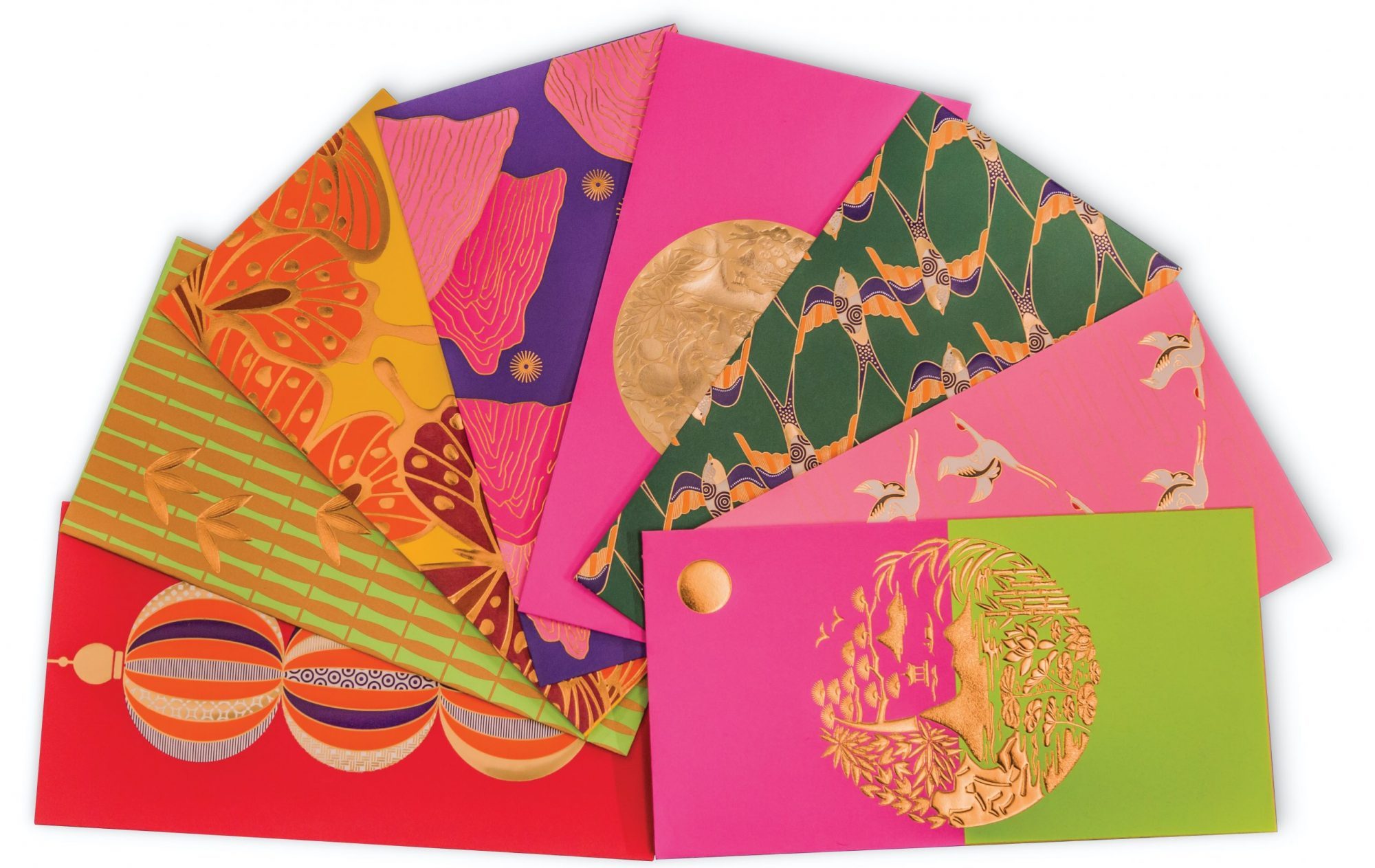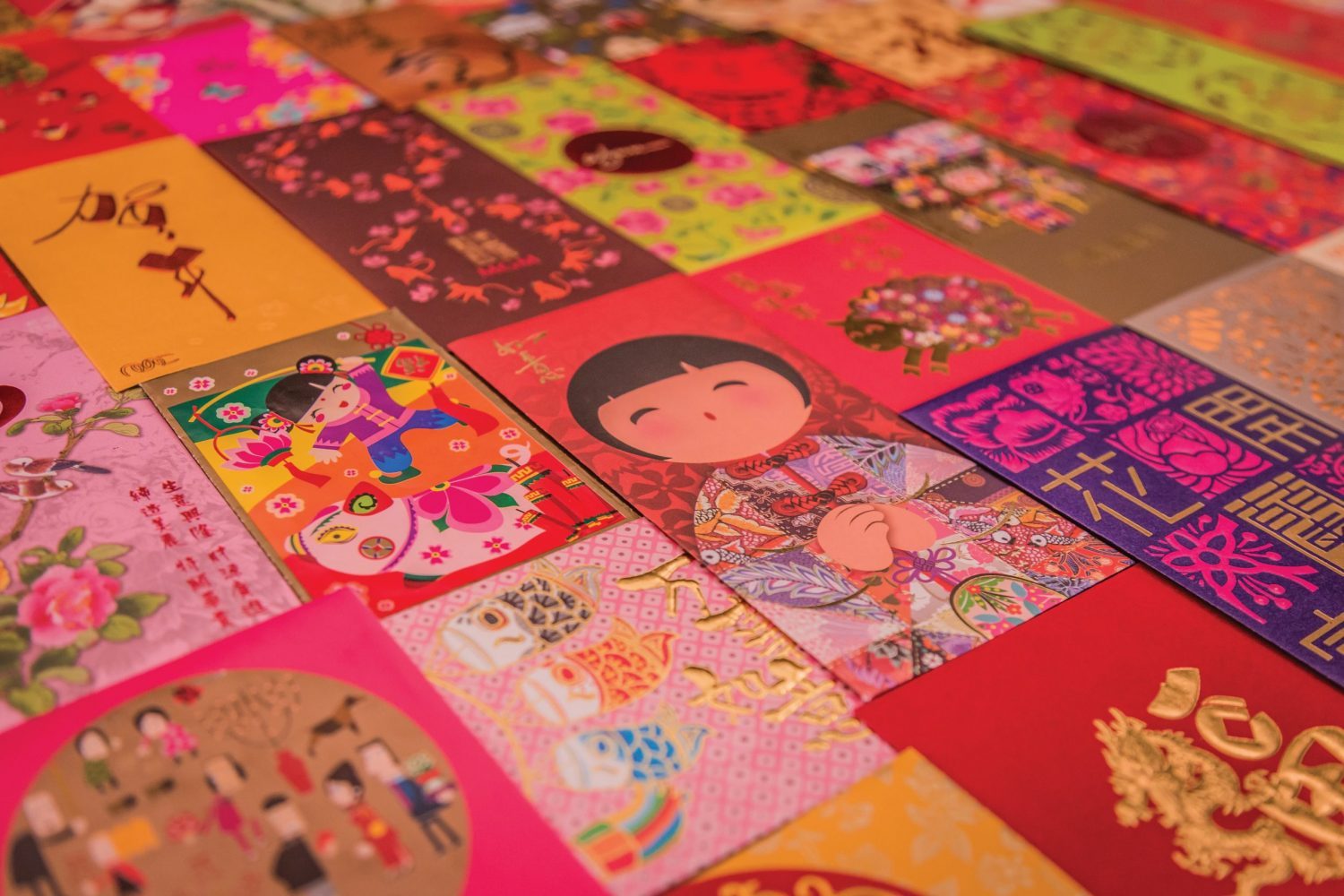With Lunar New Year comes one of China’s oldest customs: giving red envelopes to relatives, friends and employees. Known in Mandarin as ‘hong bao’ (meaning, ‘red envelopes’) and in Cantonese as ‘lai see’ (or ‘lai si’, meaning ‘being useful’), these slender, cash-filled packets represent a gesture of thanks, friendship and recognition – a momentary expression of gratitude and connection amid our busy lives.
The tradition of red envelopes is widespread throughout the Chinese world, including the international diaspora. It has also spread to countries in Southeast Asia, including Vietnam, Cambodia, Myanmar and the Philippines.
And while many of us look forward to these auspicious envelopes every year, do you know why we exchange them in the first place? We trace the origin, meaning and modern adaptations of this time-honoured tradition.
How the first lai see came to be
The concept of lai see has been passed down for several thousand years. As the story goes, older family members would thread coins with a red string, called ‘aat seoi cin’ (壓歲錢), meaning ‘to ward off old age’. They placed the coins under children’s pillows on New Year’s Eve to suppress fears and drive away evil spirits.
The red strings morphed into packets during the Tang Dynasty (618-907 AD), though the exact date is unknown. While royals and wealthy government officials commissioned hand-woven cloth bags, everyday people used red paper to wrap coins and notes with auspicious words. Seniors gave the red packets to younger members in the family on New Year’s Eve as well as milestones, such as birthdays and weddings.
Around 1900 (during the Qing Dynasty), these rudimentary packets transformed into envelopes thanks to printing technology improvements. People also began extending the tradition beyond the family, gifting red envelopes to neighbours and friends.
A lunar new year tradition
If you’re married, giving red packets is now an essential part of Lunar New Year festivities. It’s a way for senior family members to share their blessings with younger people, wishing them all the best in the upcoming year.
When giving a red envelope, the giver usually states blessings and wishes, such as: “Kung Hei Fat Choy” (恭喜發財, meaning ‘wishing you prosperity’), “San Tai Gin Hong” (身體健康, ‘best of health’) and “Cing Ceon Soeng Zyu” (青春常駐, ‘stay young’). Usually, recipients will return the blessing as an exchange of best wishes.
We commonly give red packets to loved ones – a child, an unmarried relative or an older person. Superiors also recognise subordinates, such as staff members or students, with red packets. It’s also customary to give red packets to staff members at your favourite shops and restaurants, building security guards and cleaners, chauffeurs or taxi drivers.
Packets are especially appreciated by those on modest incomes who live on tight budgets. Not only is the additional revenue incredibly welcome, but also the acknowledgement of services well-rendered. Thus, red envelopes have been woven into the fabric binding society together.
What’s more, you can also overcome an argument with the exchanging of packets – a gesture that the dispute will be left in the year prior, and you can start the new lunar cycle with a clean slate.
The evolving details
Still today, red and gold are the best colours for the packets, says Eugene Kong, who designs packets at Macau Creations, a local creative company. But as society changes, so too does the tradition.
“Red, gold, pink, purple, orange, yellow are now all common and acceptable envelope colours,” adds Kong. “The common point is that they signify happiness, good luck, auspiciousness and wealth. Just never give white or dark blue envelopes, as these colours relate to funerals.”

Fresh and crisp new envelopes and newly printed paper bills are ideal because they signify new beginnings. And aesthetically, fresh notes also look and feel better than crinkled, dirty bills.
The customs surrounding monetary amounts have also become more elaborate. It’s considered auspicious to fill envelopes with an even number of notes, such as two per envelope.
Meanwhile, a monetary amount in multiples of eight and nine are fortuitous, as the sound of ‘eight’ rhymes with the Cantonese word for becoming rich, and ‘nine’ with longevity. But don’t give out multiples of four; the number four rhymes with ‘death’ in Cantonese.
When it comes to how much to give, it depends on the situation. Standard amounts range from MOP 20-50 dollars for young children and service providers to thousands bestowed by a business tycoon to an important client or business partner.
Generally speaking, the amounts inside Lunar New Year lai see for work colleagues and close, unmarried friends range from MOP 50 to 300. Why do married people give to singles? This comes back to an age-old value in Chinese culture: the more children or grandchildren a person has, the more blessed they are.
Since marriage is typically the first step toward having children, couples are generally considered to have more blessings to share with others. But these days, some single adults will also give red packages to the younger members in their family.
Giving red packets all year round
Many people enjoy the gift of giving so much that they do not wait for Chinese New Year to dole out red packets. They might surprise their family with gifts throughout the year, or keep envelopes in their bag to bestow upon taxi drivers, vendors and kind and helpful strangers.
Red envelopes are also the gift of choice at weddings. In the Chinese world, weddings can cost tens, even hundreds, of thousands of MOP, as both sides of the family want to invite a large number of family and friends and provide the best food and wine. Additionally, the newlyweds must furnish their new home. The couple usually expects guests to gift them red packets, which will help to cover the expenses.
Among wealthy families in Macao, and elsewhere in greater China, it’s common for elders to pass out red packets of as much as MOP 10,000 or more during significant life events, such as birthdays, graduation, moving abroad to study, weddings or newborns. This is a way of showing love and affection in a culture that traditionally does not express such sentiments verbally.
In this case, the monetary amount in an envelope will be decided by several factors, including the occasion or circumstances and the social rank of both donor and recipient. Pressure to give the thickest red packets is greatest for the wealthy, who are expected to be generous to everyone. But if they are lucky, they may receive a few thick packets in return.
Additional reporting by Cathy Lai






